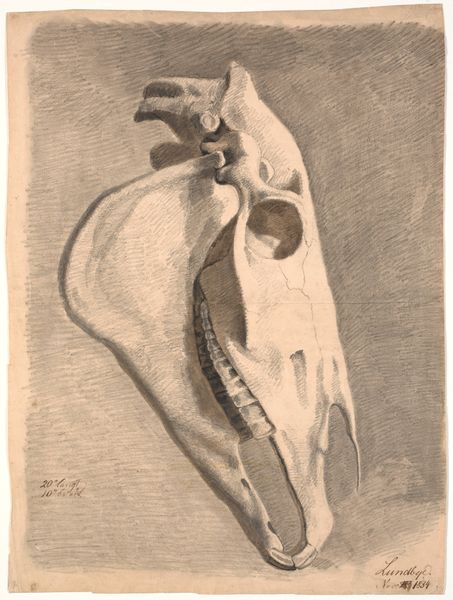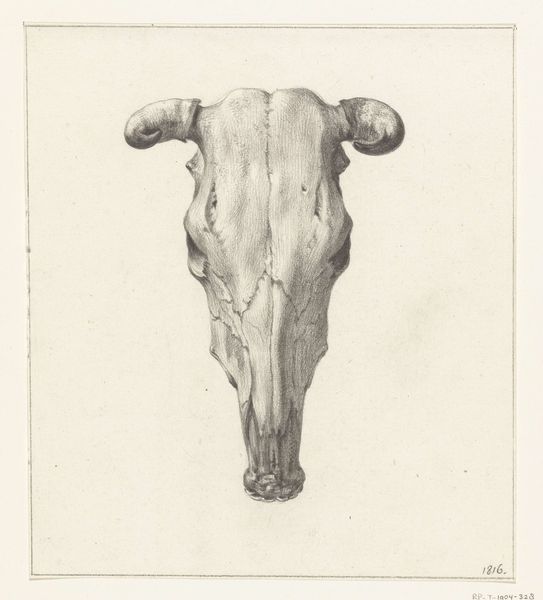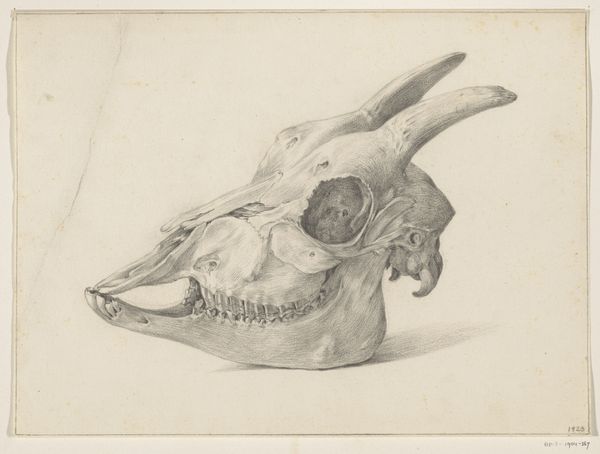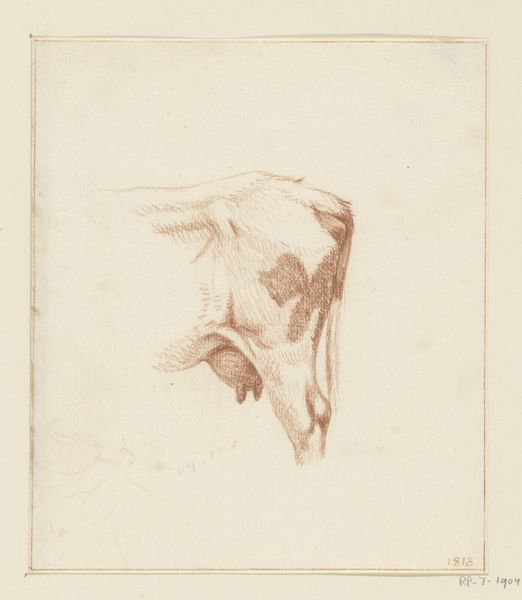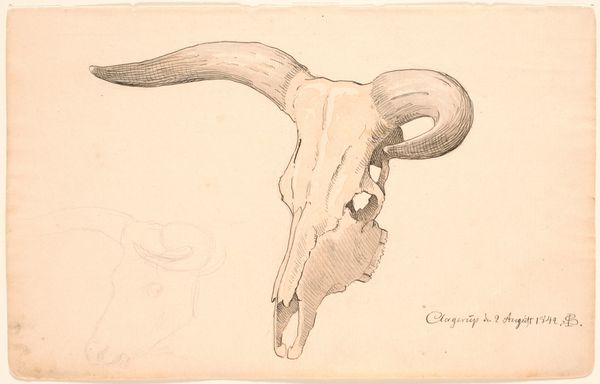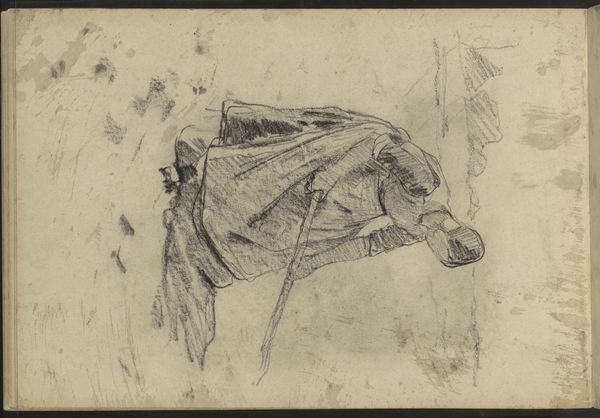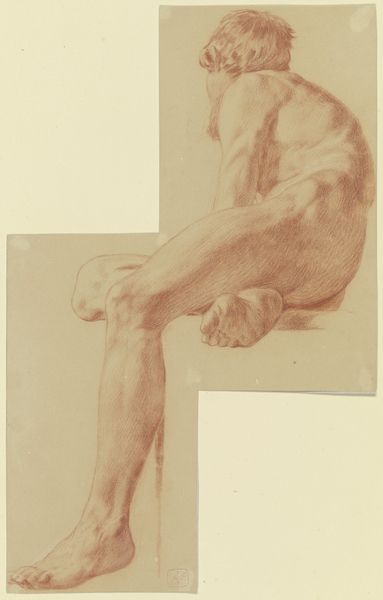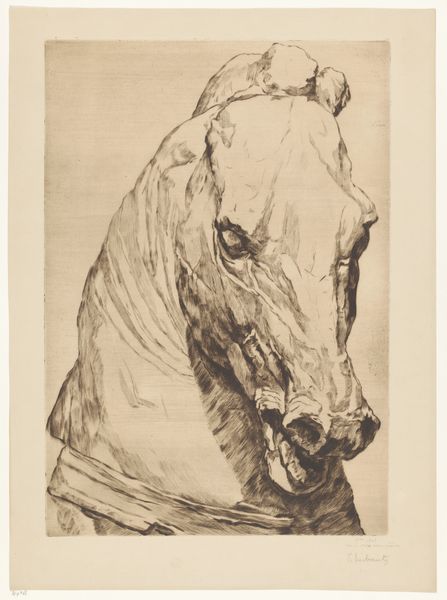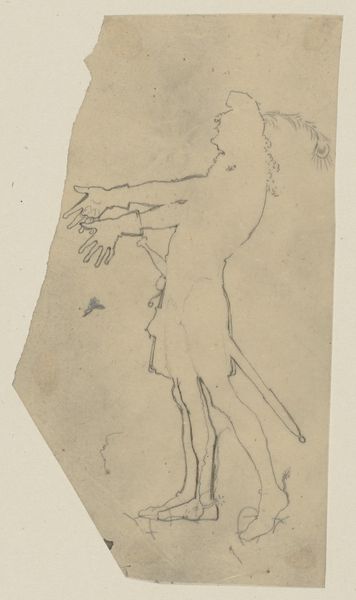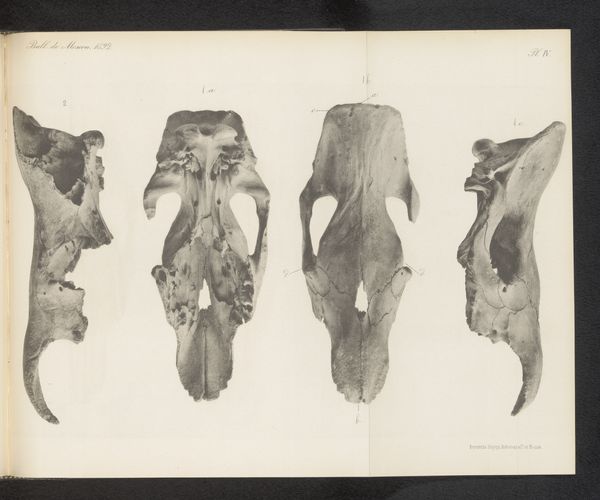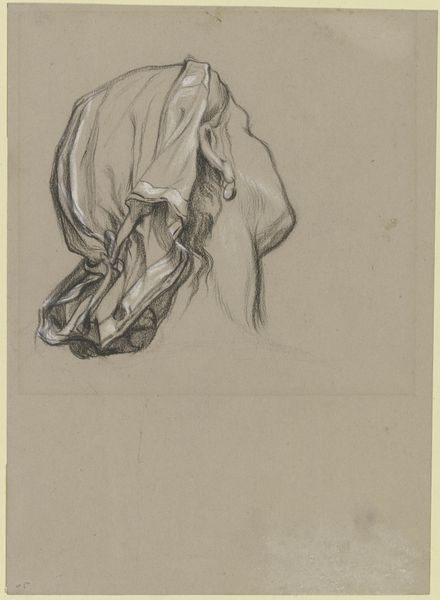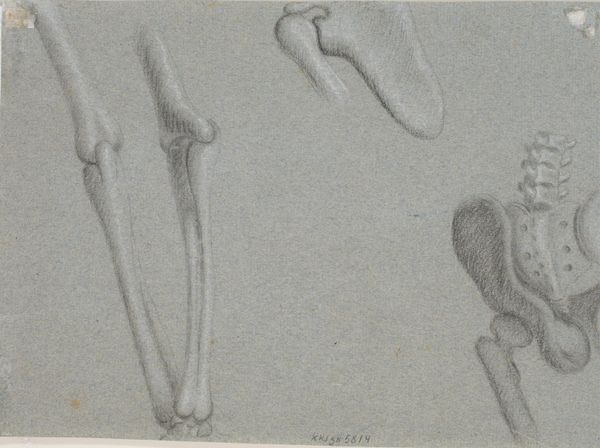
drawing, pencil, graphite
#
drawing
#
pencil drawing
#
pencil
#
graphite
#
academic-art
#
realism
Dimensions: 240 mm (height) x 150 mm (width) (bladmaal)
Editor: This is Johan Thomas Lundbye’s "Hjortekranium" – "Deer Skull" – a graphite and pencil drawing from 1839. There’s a stark, almost melancholic quality to it, even though it’s a straightforward depiction. What do you make of its simple power? Curator: Simplicity is key here. The skull, stripped bare, transcends mere anatomical study. What visual associations come to your mind? Editor: Well, Vanitas paintings obviously come to mind—that idea of skulls symbolizing mortality and the fleeting nature of life. Curator: Exactly! Skulls frequently function this way. It serves as a reminder of life’s ephemerality, inviting reflection on our existence and values. Note how Lundbye emphasizes texture – the rough surface suggests decay. What might that signify within a cultural context? Editor: Maybe it reflects a broader romantic sensibility, a fascination with ruins, relics and memento mori, a kind of beautiful sadness in the face of impermanence. But it's just a deer, right? Is that symbolic? Curator: Indeed, it could be viewed through a lens of hunting culture, representing prowess or respect for nature. Do you think its function is didactic or commemorative? Perhaps a fusion of both, hinting at existential questions. Editor: That’s fascinating – I hadn’t considered the layers of symbolism embedded in what seems like a straightforward drawing. It is clearly more than just a skull; it becomes a meditation on time, culture, and our place within the world. Curator: Precisely, and recognizing this enriches the viewing experience. Now, imagine seeing this in relation to other contemporary artworks, and the dialogue extends, right?
Comments
No comments
Be the first to comment and join the conversation on the ultimate creative platform.
